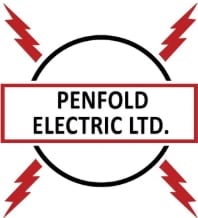If you aren’t lucky enough to have your electrical tucked away in a storage room or basement, you might be looking for ways to make its appearance less obvious. Electrical panels are necessary in any home, but they aren’t the most inviting thing to look at. Thankfully there are many options you can consider for hiding your electrical panel, regardless of where it is located. From common areas to open basements, there’s sure to be a way to cover your panel that offers functionality while being aesthetically pleasing.
At Penfold Electric, we have helped countless clients with electrical service panel upgrades and other residential electrical services. We understand that electrical panels aren’t always located where you’d like them. Whether your panel is located in a bedroom or common room, we have tips to help you minizine its appearance. Let us help you ensure the electrical components of your home are safe and working as expected. As electrical contractors, we go above and beyond to provide solutions for any residential electrical need.
Is It Legal to Cover an Electrical Panel?
Before you try to hide your electrical panel, it’s important to know the regulations surrounding covering them. In Ontario, it is legal to cover your electrical panel, but you’ll need to ensure that whatever you choose to cover it with doesn’t impact its usability. Be sure that your electrical panel can be opened fully and can be accessed with ease. When in doubt, you can always ask your trusted electrical contractor for advice on covering your panel.
How to Hide an Electrical Panel
Hiding your electrical panel doesn’t have to be expensive or complicated. Here are a few ideas to improve the appearance of your home without impacting the usability of your electrical panel.
Use Artwork or Mirrors – one of the easiest ways to hide your electrical panel is to cover it with a piece of art or framed mirror. You’ll want to be sure that anything that goes over top of your electrical panel is easy to remove, so avoid anything that would be too heavy to move on your own. This can be a perfect option for anyone whose electrical panel is located in a hallway or bedroom and is simple to do.
Consider Magnetic or Adhesive Covers – if you don’t want to hang anything in front of your electrical panel but still wish to improve its appearance, panel covers may be a good option. Both magnetic and adhesive electrical panel covers can be purchased to improve the appearance of your electrical panel rather than hide it. This is ideal for anyone who can’t put holes in a wall or needs a removable solution.
Conceal the Panel in a Cabinet – if you are completing renovations, it may be a good idea to have a cabinet or faux cabinet created to cover your panel. This option allows for your panel to remain accessible while creating a clean, tucked-away appearance. Though this may not be the best solution for panels located in hallways, it can be the perfect option if the panel is located in a bedroom, as it can blend with closets in the room.
Electrical contractors are dedicated to ensuring your electrical panel is safe and functioning properly, and aren’t necessarily home designers. However, they may have tips for minimizing the appearance of your panel. At Penfold Electric, we are proud to share our experience with our customers. When considering electrical renovations, you can expect tenfold from Penfold Electric.

